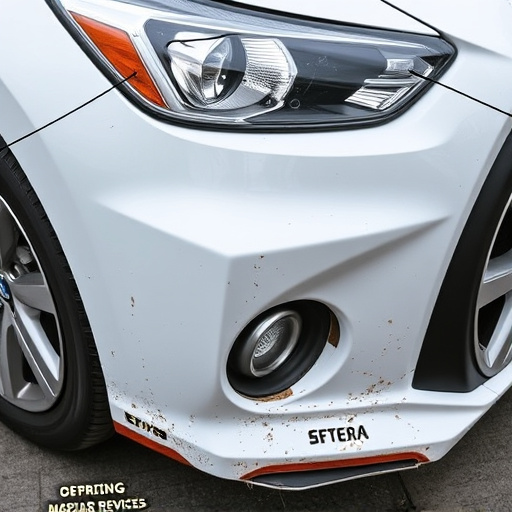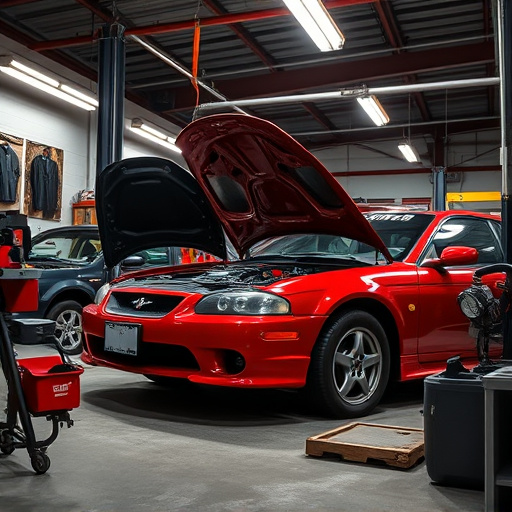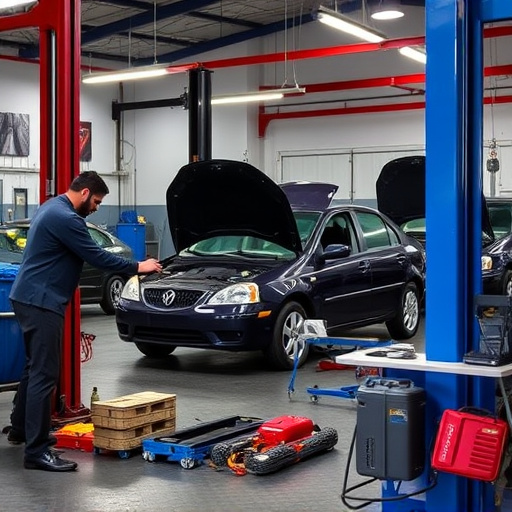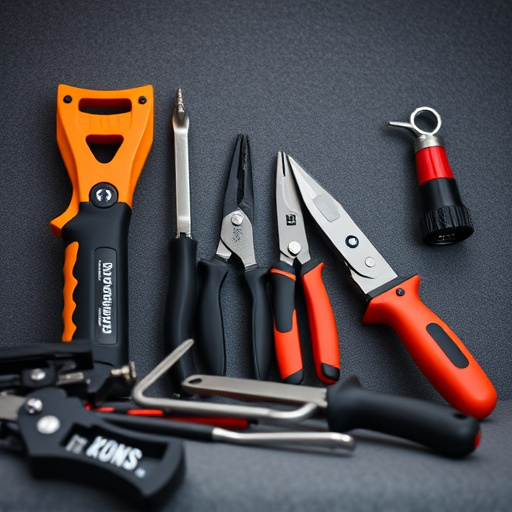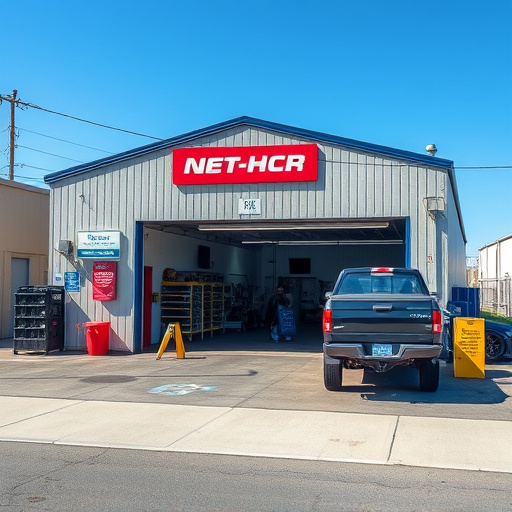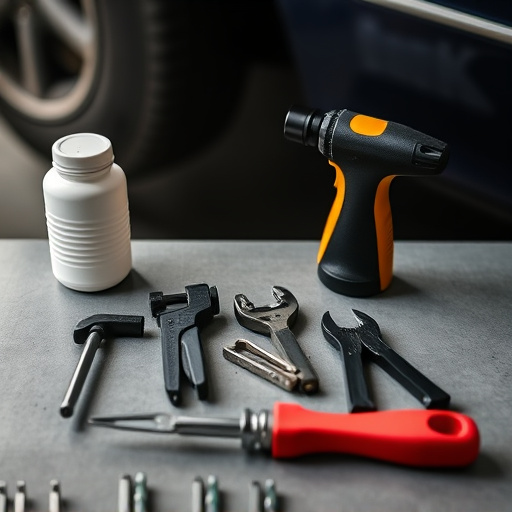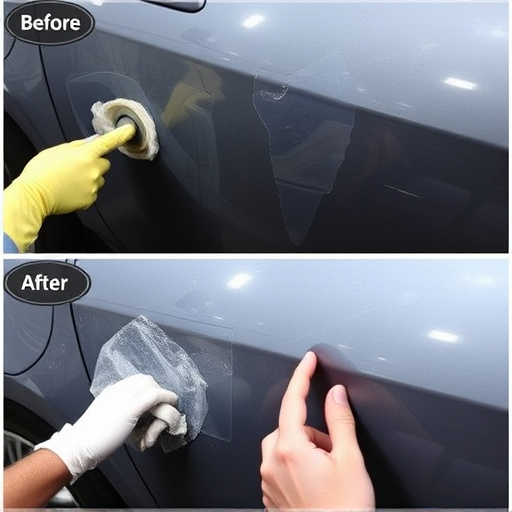The future of B-pillar replacement is being reshaped by advanced technologies like robotics, AI, 3D printing, and material science innovations, making processes more efficient, cost-effective, and eco-friendly. These include novel materials for lighter vehicle weights, sustainable alternatives, and digital twin technology for accurate pre-repair assessments. As these technologies mature, they will revolutionize automotive body shop experiences, aligning with the industry's shift towards electric and autonomous vehicles.
The future of automotive design is being reshaped by innovative B-pillar replacement technologies, driving sustainability and safety forward. This article explores the emerging trends transforming how we think about vehicle structures. From advancements in material science, like novel composites, to digital twin technology enhancing simulation, the industry is on the cusp of a revolution. We delve into eco-friendly alternatives, focusing on bio-based materials and circular economy principles, while examining the integration of autonomous vehicles and advanced driver assistance systems (ADAS) through sensor fusion and AI.
- Emerging Technologies Shaping the Future of B-Pillar Replacement
- – Advancements in Material Science: Exploring Novel Materials and Composites
- – Digital Twin Technology: Revolutionizing Design and Simulation
Emerging Technologies Shaping the Future of B-Pillar Replacement

The future of B-pillar replacement is being reshaped by a wave of emerging technologies that promise to transform the automotive industry. Innovations like advanced robotics and AI are revolutionizing dent removal processes, enabling precise and efficient repairs that were once time-consuming manual tasks. These technologies not only enhance productivity but also improve the overall quality of car restoration, ensuring seamless integration of new B-pillars with existing vehicle structures.
Additionally, 3D printing is gaining traction as a game-changer in B-pillar replacement. This technology allows for the rapid prototyping and manufacturing of custom-fit parts tailored to specific vehicle models, reducing lead times and waste. As these technologies mature, they will play a pivotal role in making B-pillar replacement more accessible, cost-effective, and environmentally friendly, revitalizing the automotive body shop experience for both technicians and customers alike.
– Advancements in Material Science: Exploring Novel Materials and Composites
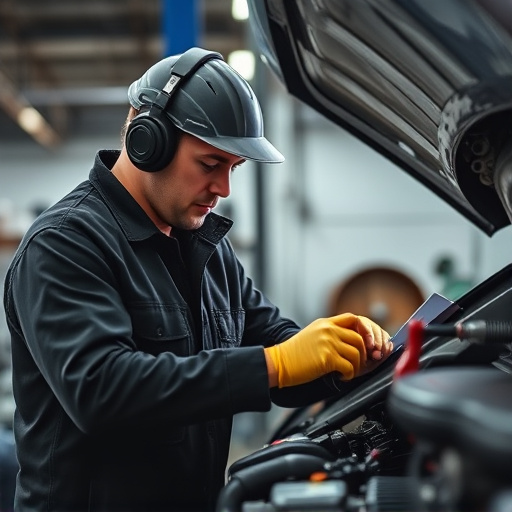
The future of B-pillar replacement technologies is being reshaped by significant advancements in material science. Researchers and manufacturers are constantly exploring novel materials and composites that offer enhanced strength, lightweight properties, and improved durability. These innovations not only cater to the growing demand for safer vehicles but also contribute to better fuel efficiency and reduced environmental impact. With the automotive industry’s shift towards electric and autonomous vehicles, new materials such as advanced high-strength steels, aluminium alloys, and even carbon fibre composites are becoming increasingly prevalent in B-pillar replacement parts. These materials promise superior crash performance while maintaining a lighter overall vehicle weight, crucial factors for modern car body shops offering auto repair services and auto body painting.
Beyond traditional metal and composite materials, there’s a growing interest in sustainable alternatives. Biomimicry and the use of recycled or bio-based materials are gaining traction as eco-friendly options for B-pillar replacement. These novel approaches not only address the need for more sustainable practices in the auto industry but also offer unique properties that could enhance vehicle performance and safety. As material science continues to evolve, car body shops can expect to see an even broader range of high-performance materials used in B-pillar replacement parts, further revolutionizing auto repair services and the overall driving experience.
– Digital Twin Technology: Revolutionizing Design and Simulation
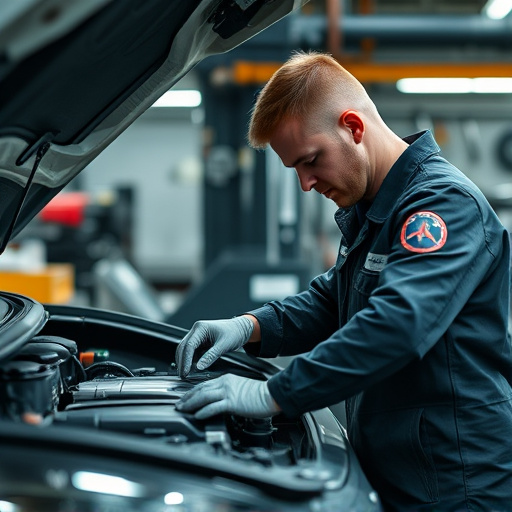
Digital Twin Technology is a game-changer in the automotive industry, especially when it comes to B-pillar replacement and auto body services. By creating a virtual replica of a physical vehicle, engineers can now simulate and test various design concepts, ensuring optimal performance and safety before actual production. This technology allows for intricate modeling and analysis, enabling manufacturers to streamline their development processes and reduce time-to-market.
For auto collision repair and auto body shops, digital twins offer a unique advantage. They provide an accurate, virtual representation of vehicles post-repair, allowing technicians to assess structural integrity and make informed decisions. This enhances precision in B-pillar replacement procedures, ensuring not just aesthetic restoration but also structural stability, which is crucial for the overall safety of the vehicle.
As we look ahead, the future of B-pillar replacement technologies appears promising, with advancements in material science and digital twin technology paving the way for innovative solutions. Novel materials and composites offer enhanced performance and lightweight properties, while digital twin technology enables precise design, simulation, and optimization, ensuring safer and more efficient vehicle structures. These trends collectively drive the automotive industry towards sustainable and intelligent mobility, shaping a new era of B-pillar replacement.
